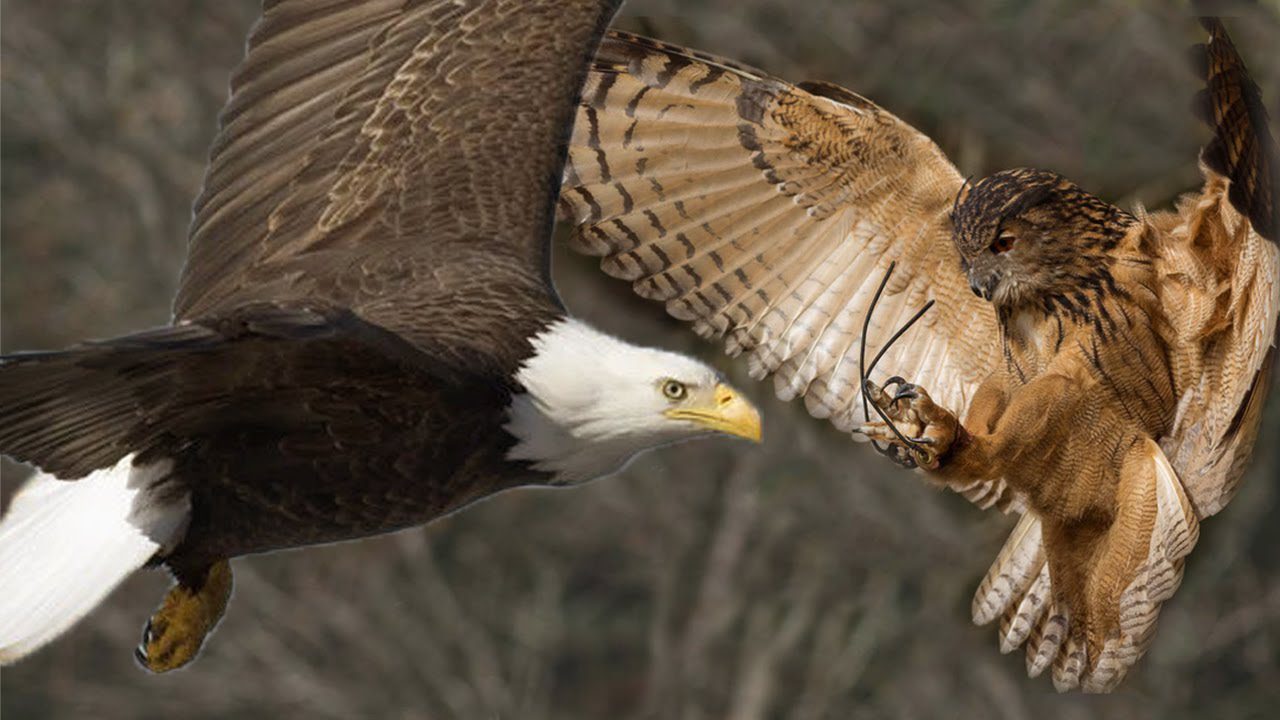The bald eagle and great horned owl are two iconic birds of prey in North America with distinctive features, habitats, and behaviors. The bald eagle is a large bird with a wingspan of up to 7 feet, while the great horned owl is smaller with a wingspan of up to 5 feet. Bald eagles prefer to live near large bodies of water and eat primarily fish, while great horned owls prefer woodlands and forests and are opportunistic predators. Despite their differences, both birds are fiercely territorial and will defend their nesting sites from each other, often engaging in aerial battles to determine the winner.
Bald Eagle vs. Great Horned Owl: The Battle of the Birds of Prey
Introduction
The bald eagle and the great horned owl are two of the most iconic birds of prey in North America. They are both majestic, powerful hunters that command respect in their respective habitats. This article will compare and contrast the features, habitats, and behaviors of these two magnificent birds of prey and explore the reasons behind their fierce rivalry.
Appearance and Physical Characteristics
The bald eagle is a large bird with a wingspan of up to 7 feet and a weight of up to 14 pounds. Its white head and tail feathers and dark brown body are distinct, and its powerful talons and curved beak make it a fearsome predator. In contrast, the great horned owl is smaller, with a wingspan of up to 5 feet and a weight of up to 5 pounds. Its shaggy, brown feathers and “horns” give it a distinct appearance, and its sharp beak and talons are also formidable weapons.
Habitat
Bald eagles are found throughout North America and prefer to live near large bodies of water, such as lakes, rivers, and coastlines. They build massive nests in tall trees near the water’s edge and are often seen soaring high above the water, looking for fish to catch. Great horned owls, on the other hand, are found throughout North and South America and prefer to live in woodlands and forests. They are skilled at hunting in the dark and can be seen perched high in trees during the daytime.
Nutrition and Feeding Habits
Bald eagles are primarily fish-eaters and will hunt for fish by swooping down to the water’s surface and grabbing the fish with their sharp talons. They also eat small mammals and birds when fish are scarce. Great horned owls are opportunistic predators and will eat small mammals, birds, reptiles, and even other owls. They are known to hunt at night and can be heard hooting loudly in the darkness.
Behavior and Social Structure
Bald eagles are known for their impressive flying skills and can soar for hours on end without flapping their wings. They are social birds and will often mate for life, returning to the same nesting site year after year. Great horned owls, on the other hand, are solitary creatures that only come together to mate and raise their young. They are skilled hunters and can take down prey much larger than themselves, such as rabbits and even skunks.
The Rivalry
Despite their different habitats and feeding habits, bald eagles and great horned owls are fierce rivals in the wild. Both birds are territorial and will fiercely defend their nesting sites from the other. Bald eagles have been known to attack great horned owls that come too close to their nests, while owls have been known to attack eaglets that venture too far from their nests. The two birds have been known to engage in aerial battles, with the winner determined by speed, agility, and strength.
Conclusion
The bald eagle and great horned owl are two of the most impressive birds of prey in North America. Their distinctive appearances, hunting techniques, and habitats make them fascinating creatures to observe in the wild. While they may be rivals, both birds are symbols of power, freedom, and independence. Whether you’re a birdwatcher or just an admirer of nature, the bald eagle and great horned owl are two birds that are sure to leave a lasting impression.
